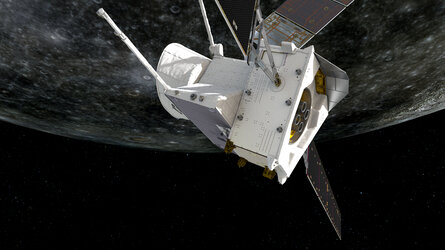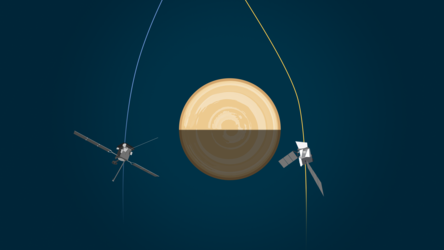

BepiColombo’s fourth Mercury flyby
Key moments during BepiColombo’s fourth Mercury flyby on 4 September 2024.
The ESA/JAXA spacecraft will pass over the surface of the planet at a distance of about 165 km.
This is the first time that BepiColombo will see the poles of Mercury, giving us new views of the planet from the spacecraft. In this infographic, we are looking at Mercury as if we are standing at the Sun.
All three of BepiColombo’s monitoring cameras will be activated. They will take images from the moment of closest approach to Mercury, up to about 24 hours later.
Many of the in situ instruments will be switched on and collecting data as usual.
Not to scale: the relative sizes of the Sun, planets and spacecraft, and the distance of the spacecraft from Mercury’s surface.
[Image description: Infographic explaining BepiColombo’s fourth flyby of Mercury. In the centre of the infographic we see the spacecraft flying past the planet. On the left we see the inner Solar System in perspective, with the positions of Mercury, Venus and Earth indicated. On the right we see which of BepiColombo’s instruments will be activated during the flyby.]





